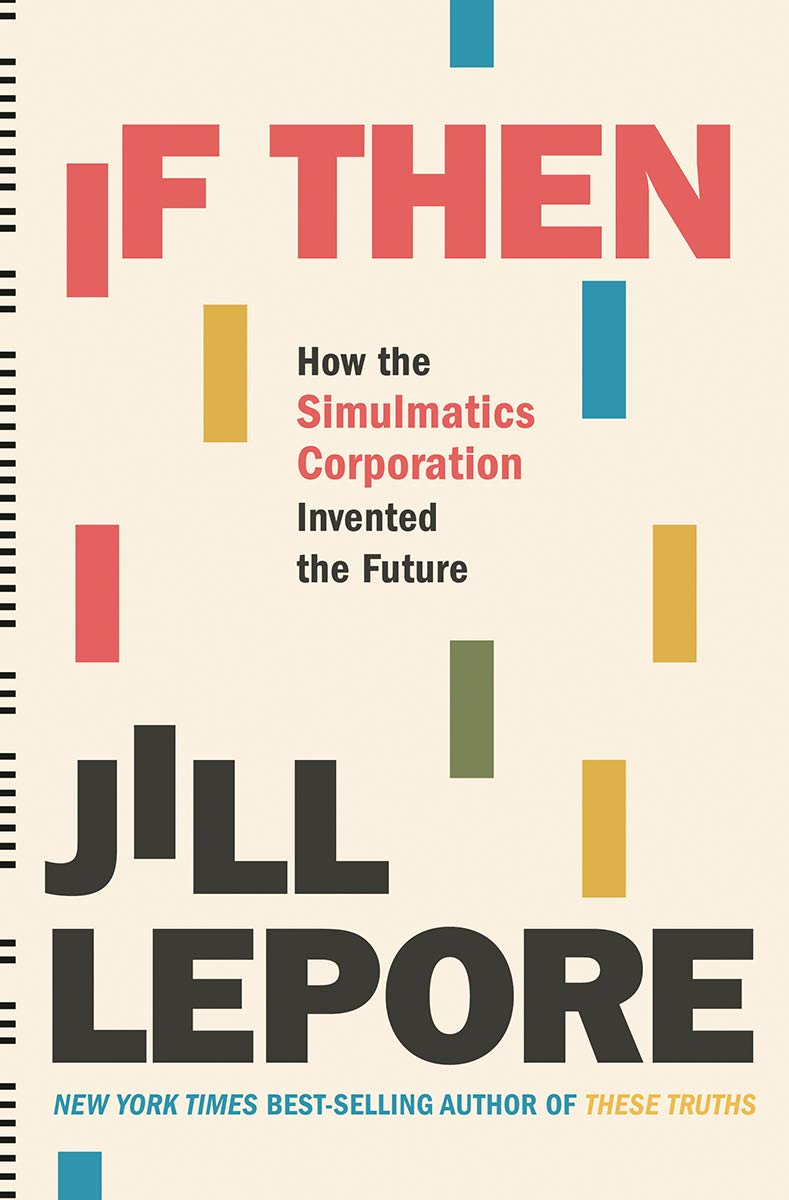


If/Then by Jill Lepore is a book ostensibly about the history of the Simulmatics Corporation, a data science firm founded in 1958 that time has forgot. The author interweaves the history of the firm with accounts of current events at the time. The book suffers from this approach, often becoming unfocused and jumping around from topic to topic. The topics discussed are often poorly connected and a guiding narrative isn't present. I thought that the real undoing of the book, though is that the subject often didn't have a lot of substance to it. Either there isn't a lot to say about Simulmatics, or Lepore's research was thin, or both.
I found the book to be a good review of major American historical events of the 60's, something that an American public school education did a pretty bad job giving me. The discussions of the red scare, the political career of Adlai Stevenson, the Kennedy campaign, and the environment on college campuses during the Vietnam war were all interesting topics, simply as a personal introduction to them.
There are some interesting stories in the Simulmatics history, especially the Kennedy campaign and the career of Ithiel de Sola Pool. The firm recommends that Kennedy take a strong pro-civil rights stance, their methods indicating that the resulting loss of the segregationist southern white vote would be smaller than the gain in the black vote. While it's unlikely that Kennedy acted on Simulmatics' recommendation, he might as well have, and it worked out in a tight 1960 election.
Pool is discussed the most of any person in the book, and his life story could probably have been the focus of a book itself. Lepore documents his journey from a college-aged socialist, to renouncing this leftism to become a department of defense-contracted consultant, from a middle aged pro-war Democrat working in Vietnam, to, finally, an elderly Republican working for the Nixon campaign. His story outlines how political boundaries were rapidly redrawn between the 50's and the 70's, and how this manifested within academia. His ideas on machine learning, big data and the internet proved to be prophetic as well, and I left the book most interested in reading more on his work.
Aside from Pool, I found the characters focused on to be rather flat, probably because the author didn't have much archival material to go on beyond very business-y and science-y material. The wives of the Simulmatics scientists and their relationships to their shitty, chauvinist husbands are discussed but not well connected to any other part of the book, and mention of them disappears in the second half. A brief portrait of a Vietnamese researcher working for Simulmatics in Vietnam does not go into much depth, beyond illustrating the ignorance with which the program was run. Most of the scientists are discussed in the context of their work, with little of their personality bleeding into the narrative beyond an initial couple lines of characterization.
I also thought large parts of the Simulmatics history to be not very interesting, as they are largely a history of bad science coupled with complete failure - the scientists at Simulmatics had a habit of overreaching in their ambition so far beyond the capabilities of their data and computational power that their research accomplished nothing at all. Their counterinsurgency research in Vietnam, their riot-prediction work, their advertising work and contract with the New York Times all suffered from bad design, bad data collection methods, datasets that were far too small, massive assumptions and biases made due to ignorance/racism, poor modelling, results obfuscated by misrepresentation, and a overriding tendency to overpromise and underdeliver. While they intended to accomplish many of the scary, ethically grey tasks for which modern machine learning is now being used, their failures at doing so are so complete that little insight comes from them other than a realization that these issues are a couple decades older than previously understood.
More interesting are the reactions to their research, the public furor over Kennedy using a 'people-machine' to simulate an election, or the U.S. government kicking the can down the road on data rights and a proposed national data center. Simulmatics proved to be most important, not in the actual results of their work, but the concepts that their work pioneered, and the counterreactions to them, debates that looked similar to those being had now over social media algorithms, data collection, and internet privacy.
If you're particularly interested in Simulmatics or early history of data science, this book contains that information, but in scattershot form that will probably frustrate someone looking for research material. If you're looking for commentary and opinion on the emergence of data science, that is also some of that here. The main insights come from the public discussion on Simulmatic's activities, as Lepore's more personal commentary don't go very deep. If you're looking for a character driven narrative, there are some good portraits of people here and there, but they are sparse and scattered throughout a text full of mostly historical narrative. Ultimately, Lepore leaves a little bit for a lot of different types of readers but fails to bring it all together to really reward anyone.